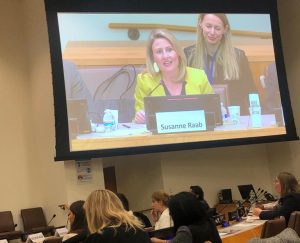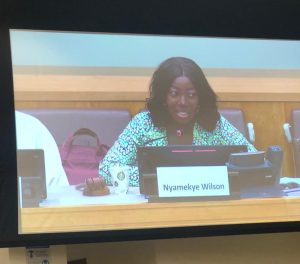Co-hosted by The Permanent Missions of Austria and Liechtenstein to the United Nations in New York / Co-sponsored by the Permanent Missions of Luxembourg and Switzerland to the United Nations, UN WOMEN and the International Telecommunication Union (ITU)
Side Event – 7 March 2023
Digital and technological transformations bear an enormous potential to contribute to the empowerment of women and girls worldwide, providing access, information, and new opportunities for employment and participation.
A balanced representation of women in STEM fields contributes to gender-sensitive innovation and digital- and tech-driven solutions. Diversity and inclusion are essential to ensure that technological and digital innovations, such as e.g. artificial intelligence, are free from biases.
Therefore, we need to strengthen the full, equal, meaningful and effective participation of women in shaping technologies – from research and development to design and application.
Mrs Susanne Raab, Federal Minister for Women, Family, Integration and Media (Austria): “We all know that digital age brings a lot of chances to ourselves in terms of gender equality, for example new employment opportunities or access to information. On the other hand, it also brings a lot of risks especially to women and girls, I’m talking about online harassment, online gender-based violence. And of course, we know that the precondition that the digital age is a chance for women and girls, is that there is an access to internet, to digital devices and of course, that women are involved in research and innovation in the STEM field. But we all know that there is a huge gender gap we have to close. This is not only a question of fairness, it’s also a question of successful companies. Because we know that diverse teams where women have a possibility to participate at all levels of decision making, are more likely to build sustainable success.”

Mrs Diana Nyamekye Wilson, Founder & CEO Black Sisters in STEM: “When we think about the development of intersectionality of women in STEM, we must consider socio-economic class and once we do that we realize that black women are the least represented of all women in STEM […]. What happened? So, what happened is really the social consequences that they are dealing with: lack of role models, lack of mentors, lack for family members in the field they want to go, lack of feeling of belonging in classes where they are typically the only one.”


